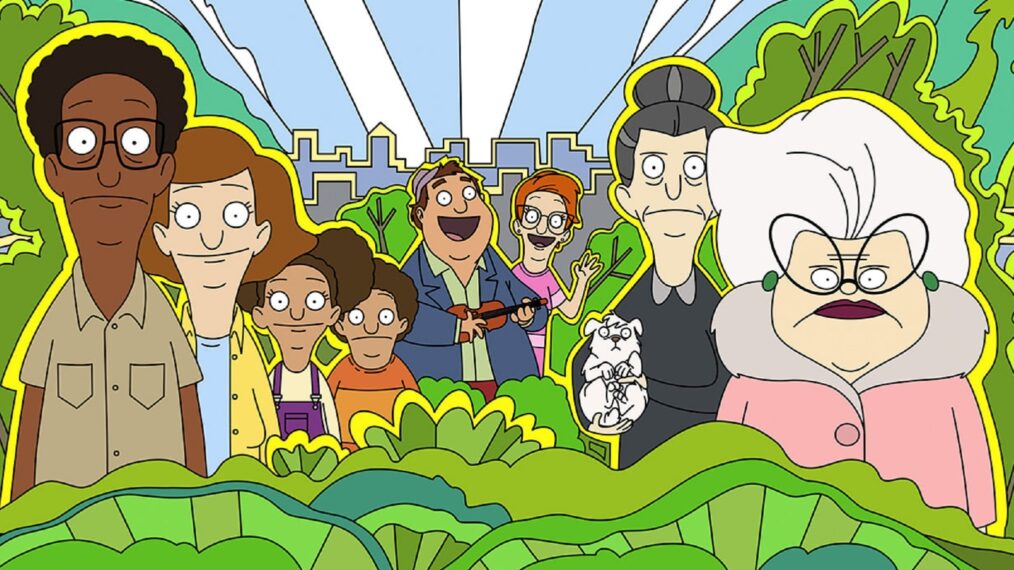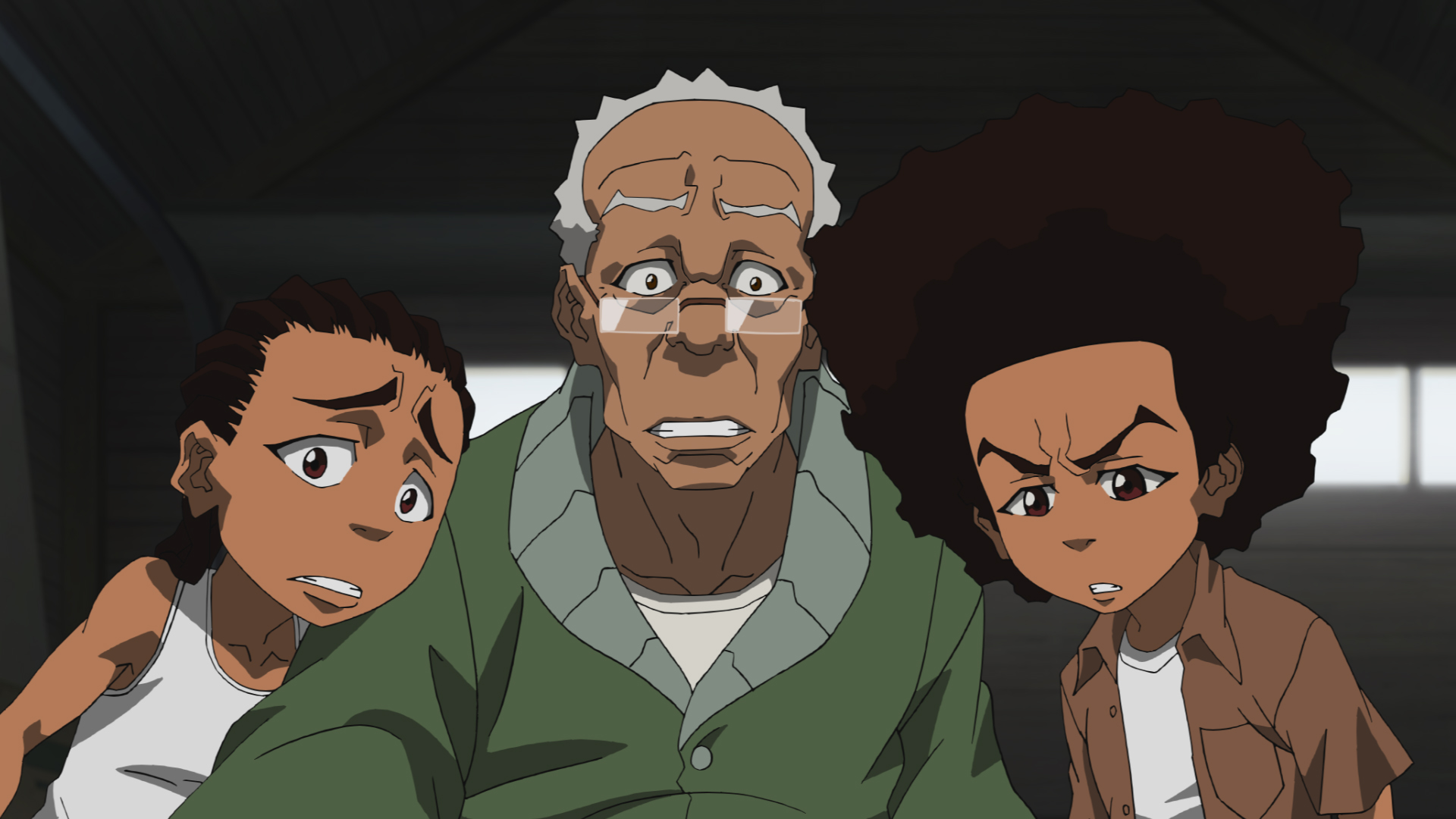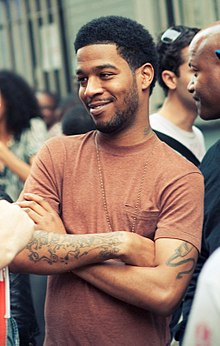Season Review: Central Park Season Three
Overview:
The cheerful Tillerman-Hunter family are back for more inspirational and emotional adventures that celebrate Central Park, and life in general, through the endlessly joyous filter of musical comedy. Owen, Paige, and the rest of their family haven’t changed much since last year, but season three presents them with new personal and professional challenges as boundaries expand, roles change, and families grow.
Our Take:
Third seasons can be important periods of transitions for television shows. After a couple seasons of building confidence and trust in their audience, the series is able to comfortably take bolder swings and begin to deviate from the original formula. It’s a little disappointing that season three of Central Park isn’t a significant period of change and that it sticks closely to what it does best. However, this is perhaps fitting for a series that’s so indebted to the tone and structure of musical theater. In this sense, Central Park’s third season is more of the same, but that’s not necessarily a problem when that means additional optimistic, affable storytelling.
Central Park’s Tillerman-Hunter family have comfortably tackled pedestrian problems in the past, but they’re typically not in true danger, even when it comes to the looming threat that the Brandenham empire represents. Season three continues to celebrate the beauty of the ordinary and how simple earthly delights can turn into a powerful metaphor for humanity itself. This small-scale, authentic nature to Central Park continues to hammer in Loren Bouchard, Nora Smith and Josh Gad’s original mission statement when they created this love letter to musical theater. These soothing staples remain present, but season three allows characters to seize new opportunities and get ready to step outside of their respective comfort zones.
One of season three’s strengths lies in its ability to properly balance the stories between the cast, including the new characters who enter the picture. No character feels slighted this season, but these episodes also benefit from being bereft of the burden of backstory and exposition, while the characters’ relationships are also now the most evolved. This season is full of grounded storylines that unpack slumber parties, budding romances, and awkward work relationships. However, Central Park also embraces sillier and broader ideas, like a movie getting filmed at Central Park, which explore new dynamics and find opportunities to present Owen and his family as the weird ones, rather than the straight characters, even when in the presence of stranger individuals. These playful, bigger stories would have felt impossible back during season one, yet they’re still grounded and feel like a natural progression of the series.
Some of the more powerful stories from this season involve the ways in which friendships can transform over time–both in ways that are natural as well as jarring Kafka-esque shifts–and how to process these changes on a personal level and what they mean in a larger social context. In the case of Owen, this helps him finally try to tone down his passion for work, understand that there’s more in life, and that not everyone is as married to their vocation as he is. This is effectively offset through Elwood, Owen’s park ranger partner, who continues to become a more prominent presence in the series and is one of the consistent highlights of this season. All of Elwood’s storylines have an exciting drive behind them rather than coming across as forced scenarios to give this character something to do.
One of the more creative episodes of the season involves a triptych of fantasy stories that push the show a little further out of its comfort zone and allow it to engage in atypical impulses. It’s quite common for animated series to turn to anthology episodes in order to mix up their storytelling or engage in some type of genre pastiche. While the heights of Central Park’s experiment in this territory can’t compete with The Simpsons’ “Treehouse of Horror” or Futurama’s “Anthology Of Interest,” it’s still a perk for a series that tends to play things straight. Each of these tales also function as perfect distillations for each of their respective storytellers and help the episode work as a nuanced character study as well as a fantastical imaginary endeavor. In this sense, “A Triptych Down Memory Lane” feels much closer to Bob’s Burgers’ “The Frond Files” and “The Gayle Tales” anthology experiments. Turning this episode’s structure into a recurring tradition for Central Park will only build greater confidence in this area and any future stylistic departures for the series.
Alternatively, Central Park also finds the courage to indulge in non-stories that feel like they’d be too thin to sustain entire episodes, but as a result become celebrations of characters and dialogue that help the characters learn new things about themselves just as Central Park does the same.The best moments from this third season are routinely the stories where Central Park either overdoes it or seems like it’s not trying at all.
Central Park’s second season received some attention for the recasting of Kristen Bell’s Molly Tillerman to Emmy Raver-Lampman. Audiences were promised that Bell would return to the series in a new capacity, which season three brings to fruition in the form of Abby, Paige’s sister. Abby is eager to seize New York City by storm as an exuberant, optimistic outsider. Abby helps provide a welcome outside perspective as someone who didn’t grow up as a New Yorker or was deeply entrenched in a fast-paced urban lifestyle. Abby becomes a helpful tool to experience the beauty of the city through fresh eyes, but she also arrives during the perfect point in the series where things are beginning to feel stale and lack the luster of when Central Park first premiered. The addition of Abby is actually incredibly helpful and a blessing in disguise as opposed to if Abby was a fixture from the start of the series or an early season two addition.The new sisterly dynamic that’s triggered between Paige and Abby also does a lot for Paige’s character, who often feels like the most neglected member of the Tillerman-Hunter family.
.Abby’s stories get to explore the wide-eyed optimism of adults who move to New York City and want to seize the city for all it’s got, despite the grueling lifestyle and sacrifices that frequently need to be made to acquire such an existence. Abby appropriately taps into these stories without ever feeling too naive towards her lot in life. It’s a fresh strata of stories to explore that feel deeply entrenched into an important facet of New York City that wasn’t previously represented in Central Park, beyond fleeting references through Birdie’s narrator busker. However, Birdie’s not someone who’s been able to have the same emotional depth as Central Park’s main characters.
All of this puts Abby on a curious path with Bitsy and Helen, which feels completely natural and adds another layer to the growing relationship between the star-crossed Brandenham and Tillerman-Hunter families. The slightly softer side of Bitsy that Abby brings forward becomes one of the larger running elements of the season, particularly in response to the city’s new mayor, which culminates in a suspenseful tote bad-centric finale.
Every character forges stronger bonds with those outside of their immediate circles, which helps them view themselves more as individuals who can properly stand on their own. It feels like the natural progression for Central Park, but it’s also a believable choice based on where these characters are all at in their respective lives. Much of this season emphasizes how perfection is an impossible pursuit and that it’s okay to experience, and accept, flaws. Life is meant to be challenging, but that helps make it even more fulfilling. ”A love worth fighting for,” becomes a mantra of sorts throughout this season, whether it’s talking about physical fondness between people or the adoration towards a certain lifestyle or existence.
The music of Central Park is a crucial component of the series and this season adds more than 50 new songs to the show’s sprawling soundtrack. Bitsy and Helen’s numbers still feel the most inventive of the lot, but all of the music remains enjoyable. It wouldn’t be fair to consider any of these new lyrical arrangements to be “bad,” but it inevitably becomes harder for songs to feel fresh when there are already more than 125 unique melodies across the first two seasons alone.
Season three of Central Park remains effortless, optimistic, charming television that’s the perfect comfort food for adults and children alike. This series is perhaps not appointment television, but it’s harmless and hopeful, which is hardly the worst offense for a show to commit. Those who aren’t already Central Park fans are unlikely to suddenly jump on board, but it remains pleasant, easy viewing and those who have bought tickets to this performance will be content to return to their season seats and continue to be entertained by these lovable characters. These new episodes preach the importance of being able to relax and enjoy the natural beauty of life. That’s the purpose of Central Park, the institution, and the pride of Central Park, the television series.
Season three of ‘Central Park’ premieres on Apple TV+ on September 9th























"There are also other characters that come and go (also owned by the Warner Bros. Discovery conglomerate media company)."
Huh. Is that just referring to other characters from the show itself, or is this implying that the new season is going to have cameos from other WBD IPs